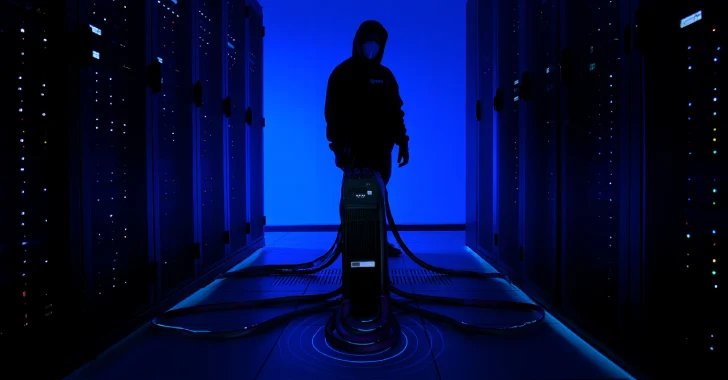Essential Insights
-
Targeted Vulnerabilities: A cyber threat group identified as UNC6148 is exploiting fully-patched, end-of-life SonicWall Secure Mobile Access (SMA) 100 series appliances to deploy a backdoor called OVERSTEP, leveraging stolen credentials for access.
-
Evasion Techniques: The attackers established a reverse shell to manipulate the appliance, utilizing a usermode rootkit to conceal their activities and maintain persistence by modifying the appliance’s boot process.
-
Data Theft Intent: Google assesses that UNC6148’s operations are aimed at facilitating data theft and extortion, linked to previous attacks involving ransomware, particularly as one targeted organization was listed on a data leak site.
- Forensic Recommendations: Organizations must acquire disk images for forensic analysis to counteract the attacker’s anti-forensic measures, and may need to work directly with SonicWall for assistance in this process.
The Issue
In a troubling development, the Google Threat Intelligence Group (GTIG) has reported a coordinated campaign targeting SonicWall Secure Mobile Access (SMA) 100 series appliances that are fully patched yet reaching their end-of-life. This nefarious activity, attributed to a group identified as UNC6148, has been active since at least October 2024, and involves the deployment of a sophisticated backdoor known as OVERSTEP. Initial access appears to have been facilitated by exploited vulnerabilities and potentially stolen credentials, with the malicious operators leveraging tools and methods designed to bypass conventional security protocols. The precise means of entry remains under investigation, as perpetrators have undertaken extensive measures to eliminate logs and leave minimal traces.
Once infiltrated, UNC6148 introduced OVERSTEP, which manipulates the appliance’s boot process for persistent access, enabling a range of malicious functions such as credential theft and system manipulation—all while cleverly concealing its presence. The campaign is intertwined with broader data theft and extortion activities, underscoring an alarming trend in which attackers are increasingly targeting overlooked edge network systems. As organizations grapple with the aftermath, experts recommend forensic disk imaging to counter the rootkit’s anti-forensic functionalities, suggesting a comprehensive engagement with SonicWall for further investigative support.
Risks Involved
The targeting of SonicWall Secure Mobile Access (SMA) appliances by the threat group UNC6148 poses significant risks not only to the affected businesses but also to interconnected organizations and users within their operational ecosystem. As these appliances serve as critical nodes for secure communications, a successful breach can lead to widespread credential theft, facilitating unauthorized access and reconnaissance activities across networks. This interconnectedness means that once one organization is compromised, a cascading effect can ensue, jeopardizing the integrity and confidentiality of data within supply chains and partner networks. Furthermore, the deployment of the OVERSTEP backdoor enhances the potential for data exfiltration and extortion, placing businesses at risk of financial loss and reputational damage if sensitive information is leaked or held for ransom. Consequently, the ramifications extend beyond individual organizations, threatening a domino effect of vulnerabilities that can impact users and related entities, thereby necessitating immediate vigilance and collaborative defense strategies to mitigate these escalating threats.
Fix & Mitigation
The significance of timely remediation in cybersecurity cannot be overstated, particularly when addressing vulnerabilities such as the ‘UNC6148 Backdoors Fully-Patched SonicWall SMA 100 Series Devices with OVERSTEP Rootkit.’ Swift action can mitigate potential damage and reinforce an organization’s cyber resilience.
Mitigation and Remediation Steps
- Conduct comprehensive threat analysis to understand the scope.
- Isolate affected devices to prevent lateral movement.
- Perform thorough scans to identify and eliminate the rootkit.
- Apply available patches and firmware updates to restore security.
- Monitor network traffic for unusual activity post-remediation.
- Engage with cybersecurity experts for a thorough investigation.
- Educate staff about security practices to prevent future incidents.
NIST CSF Guidance
The NIST Cybersecurity Framework (CSF) emphasizes the importance of identifying and managing vulnerabilities. For in-depth information, refer to NIST Special Publication (SP) 800-53, which outlines comprehensive security and privacy controls for information systems.
Advance Your Cyber Knowledge
Explore career growth and education via Careers & Learning, or dive into Compliance essentials.
Understand foundational security frameworks via NIST CSF on Wikipedia.
Disclaimer: The information provided may not always be accurate or up to date. Please do your own research, as the cybersecurity landscape evolves rapidly. Intended for secondary references purposes only.
Cyberattacks-V1

